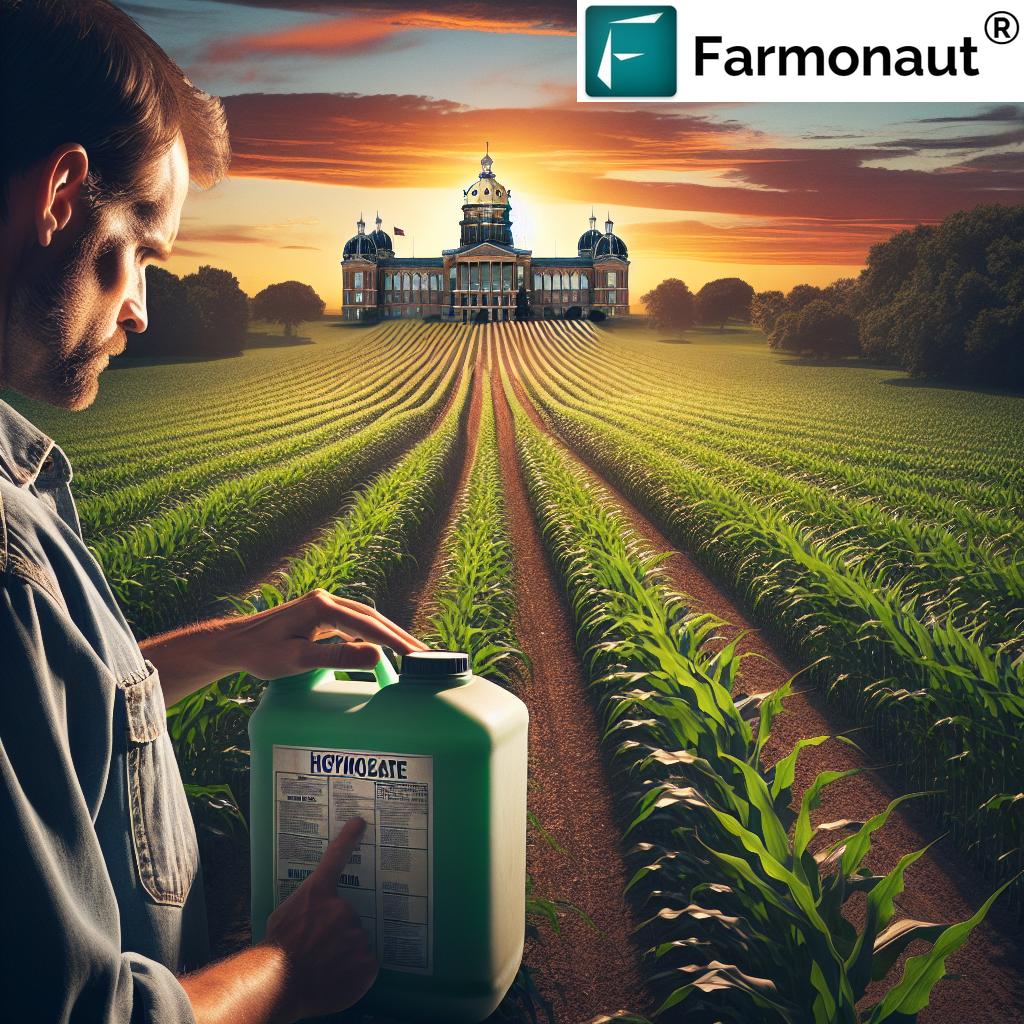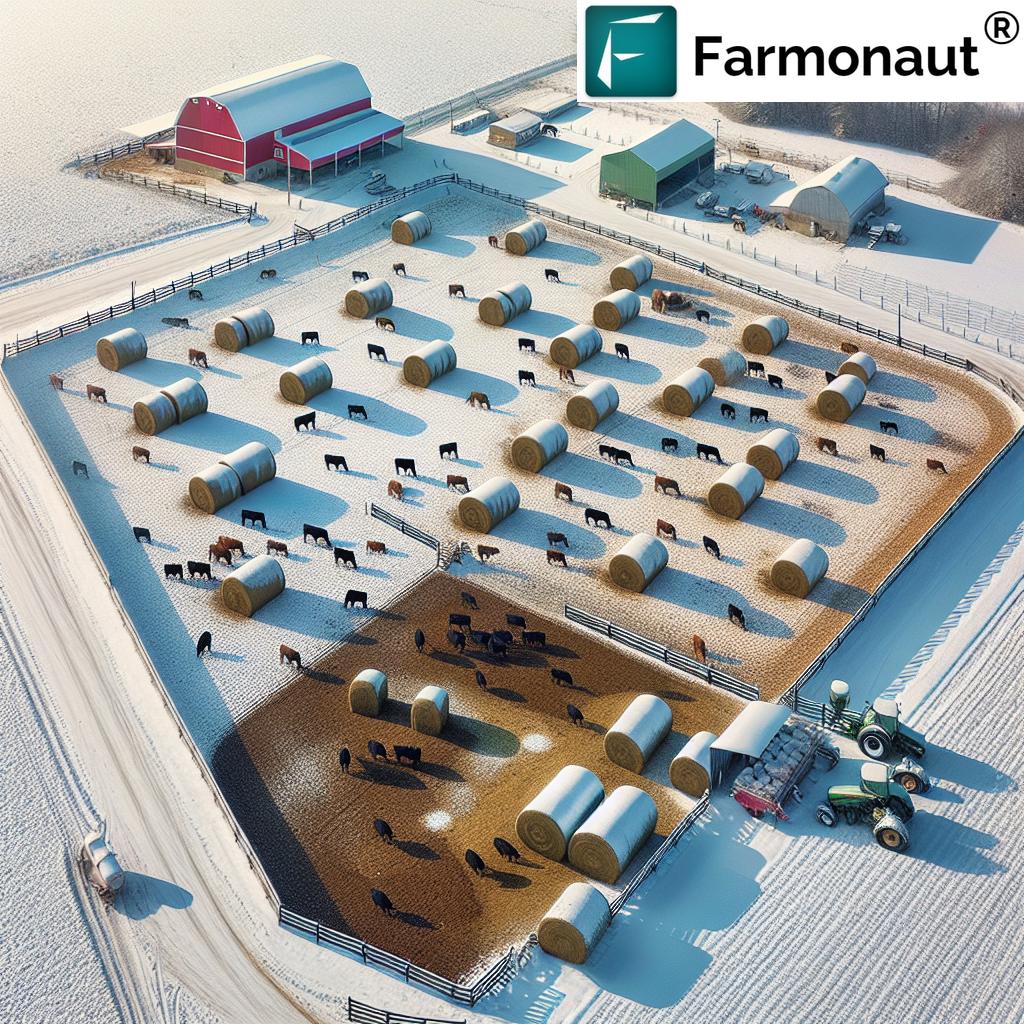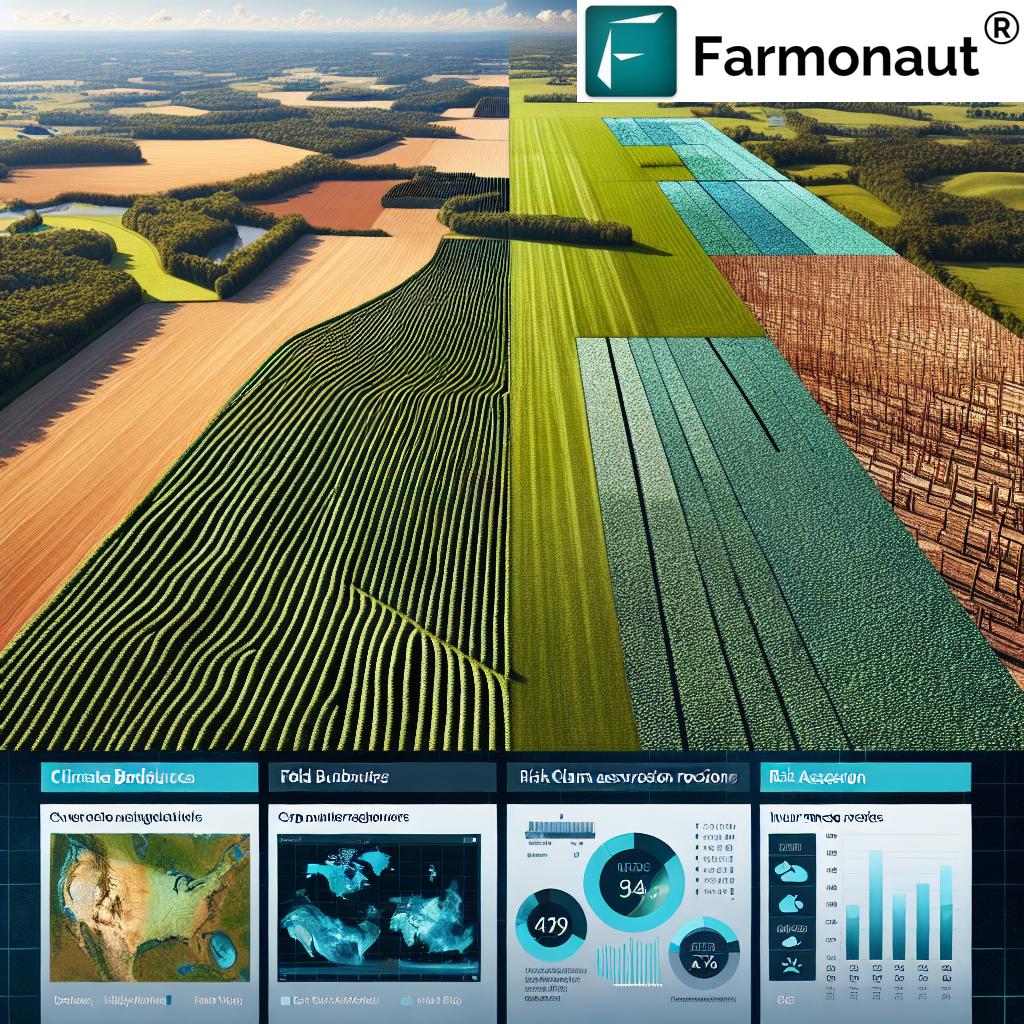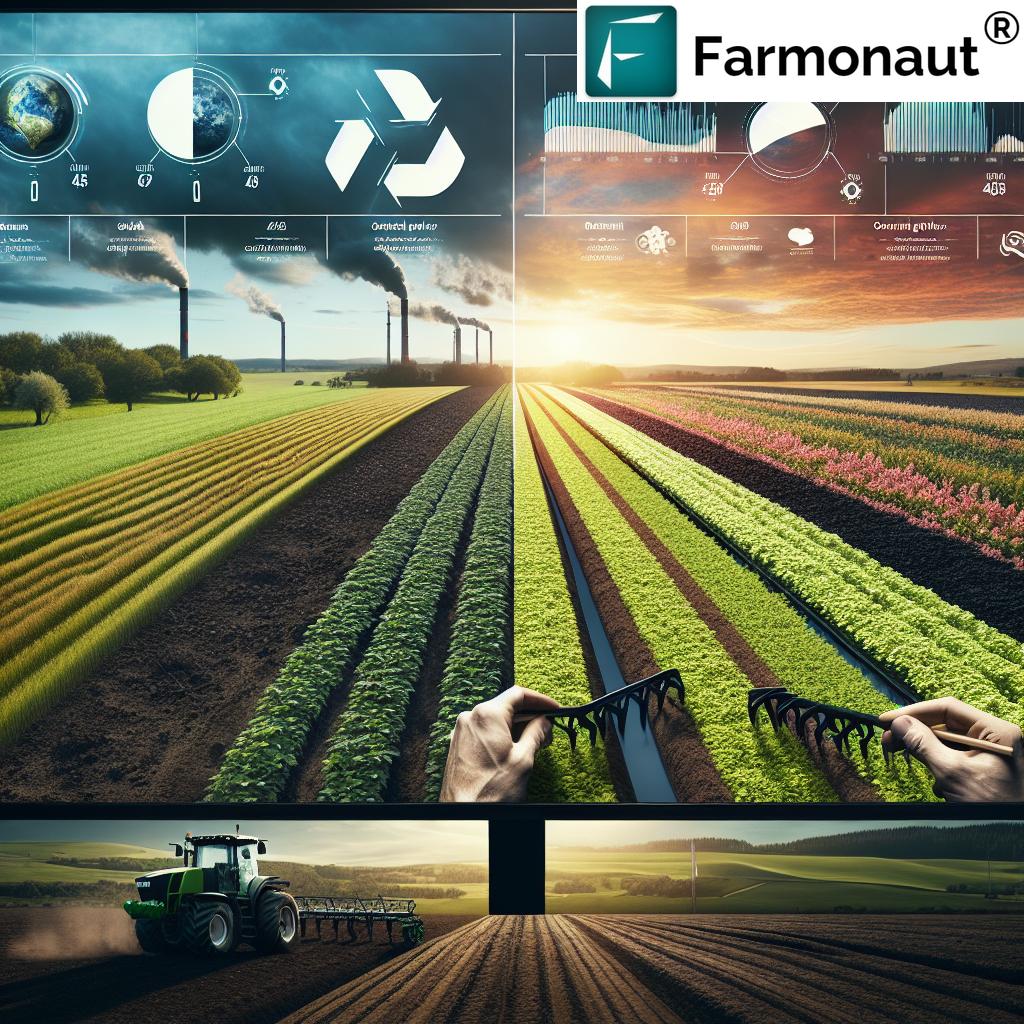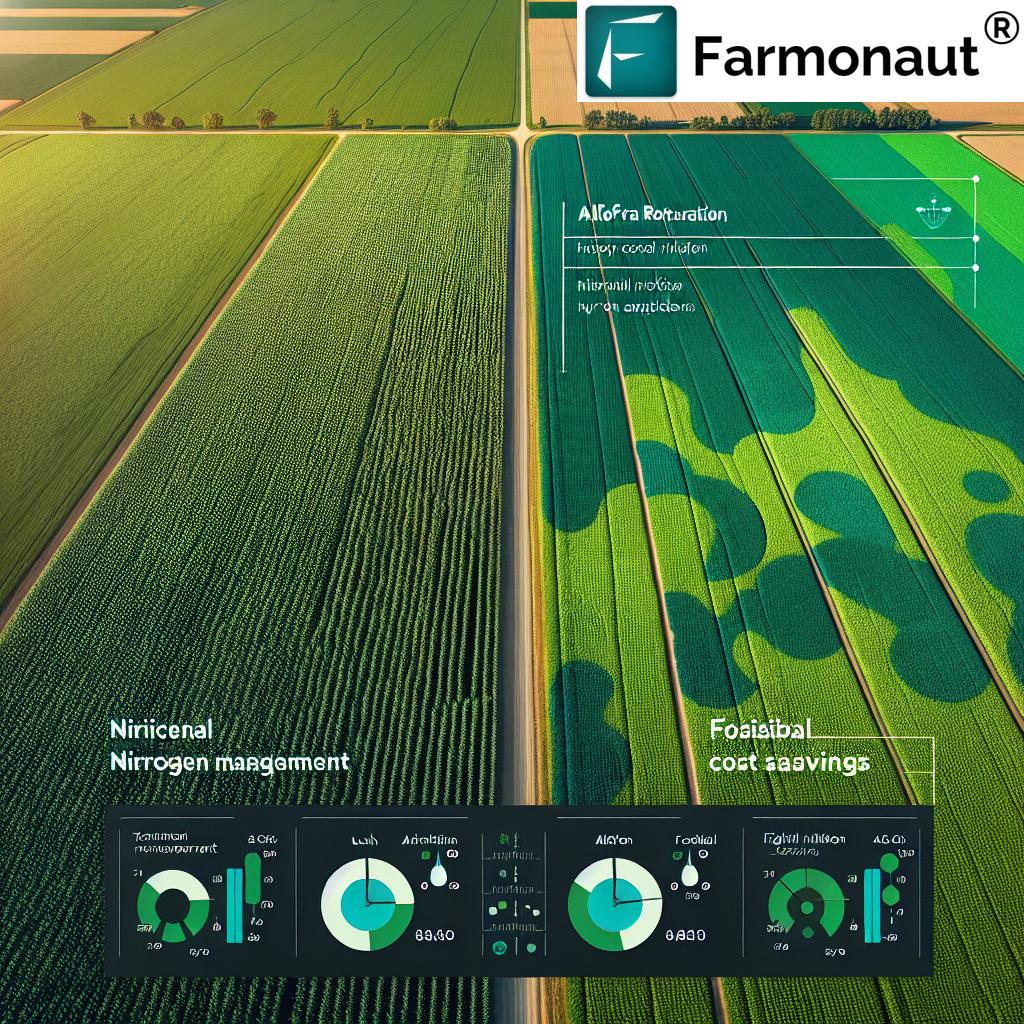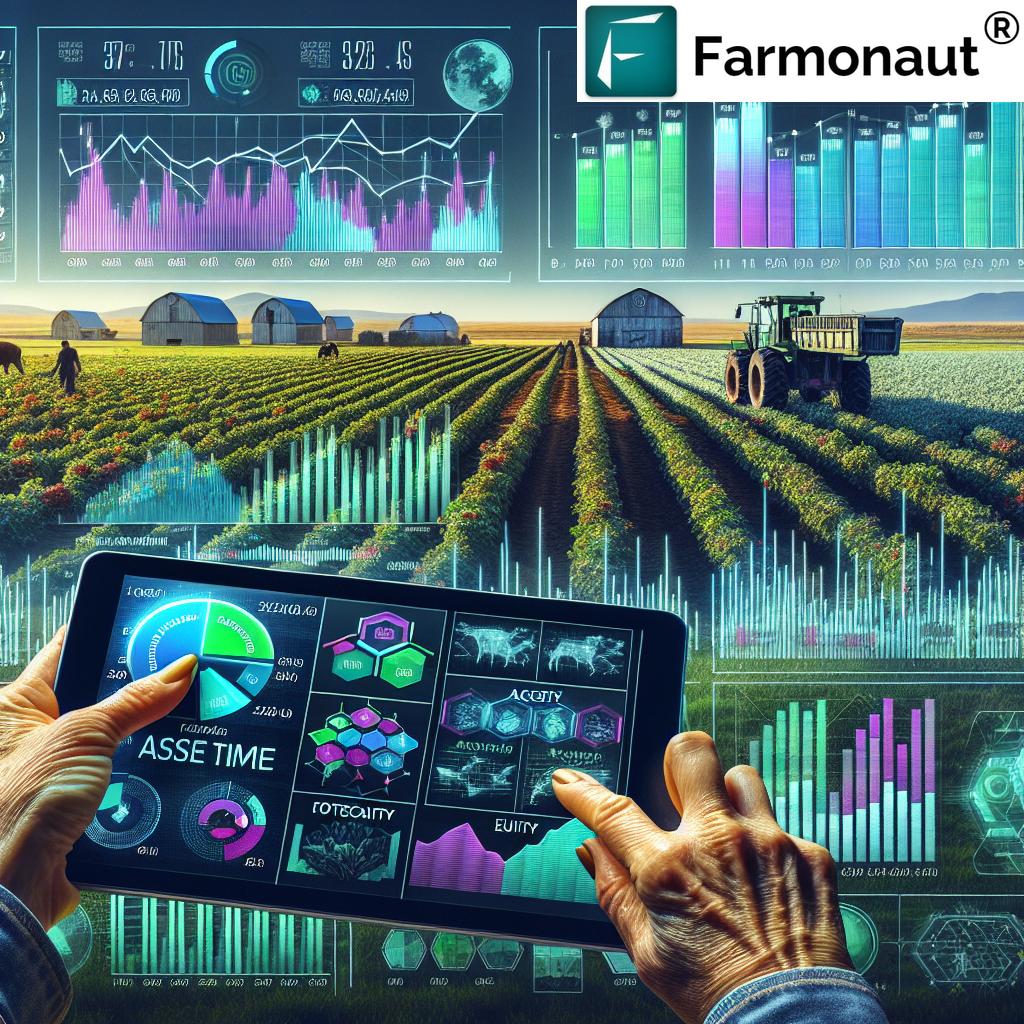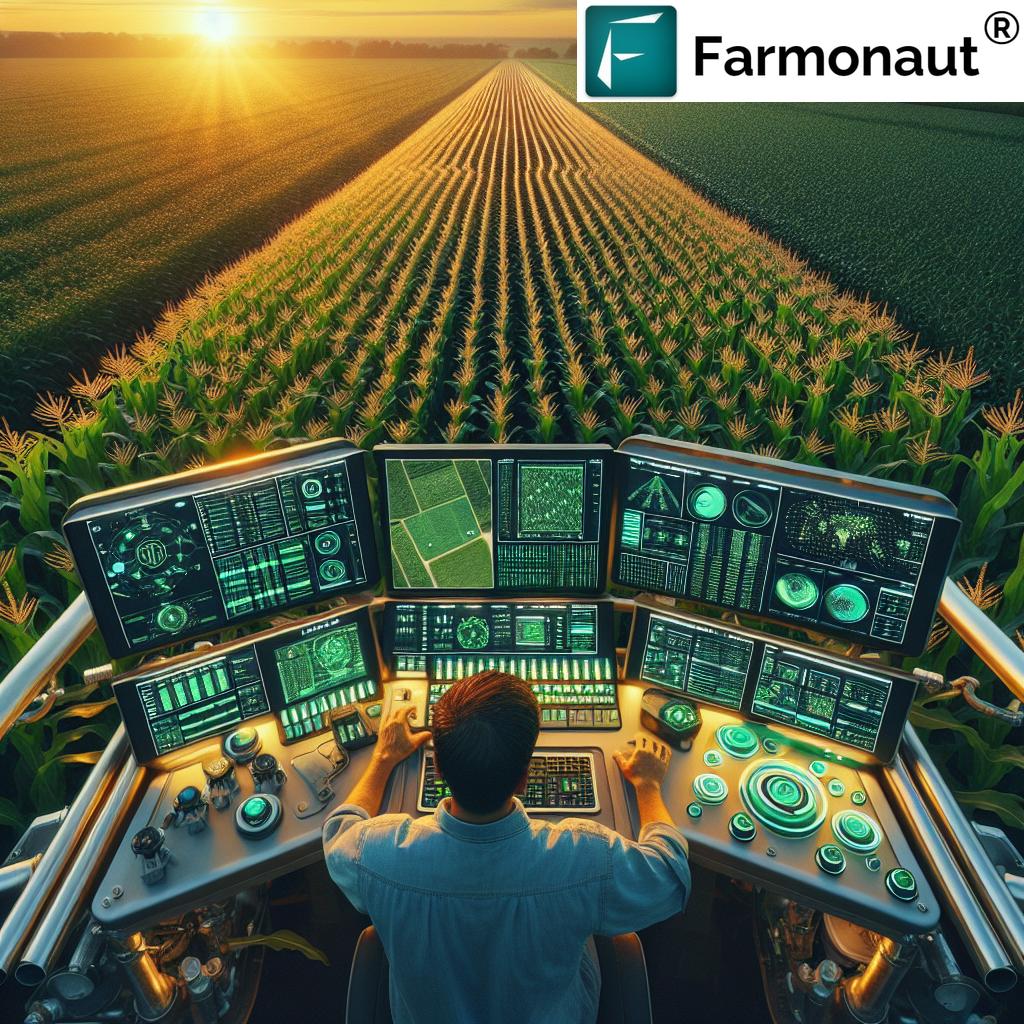Exploring Innovation: FICCI Business Delegation’s Journey to Stanford University

We, the FICCI business delegation, recently embarked on an enlightening journey along the bay area, exploring the cutting-edge technological landscape that defines this region. Our group, comprising representatives from pioneering tech startups and companies, including Farmonaut®, had the privilege of visiting the prestigious Stanford University. This excursion provided us with invaluable insights into the academic and technological prowess that Stanford embodies, contributing to a rich and enlightening experience for our delegation.
The Bay Area: A Hub of Innovation
The San Francisco Bay Area has long been recognized as a global center for technology and innovation. Home to Silicon Valley, this region has given birth to some of the world’s most influential tech companies and continues to be a breeding ground for groundbreaking ideas and startups. Our journey through this vibrant ecosystem allowed us to witness firsthand the spirit of innovation that permeates every aspect of life in the bay area.
Stanford University: A Beacon of Academic Excellence
Our visit to Stanford University was undoubtedly one of the highlights of our trip. Founded in 1885, Stanford has consistently ranked among the world’s top universities and has played a crucial role in shaping the technological landscape of Silicon Valley and beyond.
Campus Tour
As we stepped onto the sprawling 8,180-acre campus, we were immediately struck by its beauty and grandeur. The iconic Stanford Main Quad, with its distinctive Romanesque architecture, served as the starting point for our tour. We explored various departments and facilities, including:
- The School of Engineering
- The Graduate School of Business
- The Stanford Research Park
- The d.school (Hasso Plattner Institute of Design)
Each of these locations offered unique insights into Stanford’s approach to education, research, and innovation.
Cutting-Edge Research Facilities
One of the most impressive aspects of our visit was the opportunity to see some of Stanford’s state-of-the-art research facilities. We were particularly intrigued by:
- The Stanford Nanofabrication Facility: This cleanroom facility supports research in nanotechnology, MEMS, and other emerging fields.
- The SLAC National Accelerator Laboratory: Although not on the main campus, this DOE-funded research center is operated by Stanford and is at the forefront of particle physics research.
- The Stanford Artificial Intelligence Laboratory (SAIL): This lab has been at the forefront of AI research since the 1960s and continues to push the boundaries of machine learning and robotics.
Entrepreneurship and Innovation
Stanford’s commitment to fostering entrepreneurship was evident throughout our visit. We learned about various programs and initiatives designed to support student and faculty startups, including:
- StartX: A non-profit startup accelerator associated with Stanford
- The Stanford Technology Ventures Program (STVP)
- Stanford Venture Studio: A co-working space for student entrepreneurs
These resources have played a crucial role in launching numerous successful startups, contributing to the university’s reputation as a launchpad for innovation.
Farmonaut: Pioneering AgTech Solutions
As part of the FICCI business delegation, Farmonaut stood out as a prime example of how technology can revolutionize traditional industries like agriculture. Farmonaut’s presence in this delegation underscores the growing importance of AgTech in the global technology landscape.
Farmonaut’s Innovative Approach
Farmonaut is at the forefront of agricultural technology, offering advanced, satellite-based farm management solutions. The company’s mission aligns perfectly with the spirit of innovation we witnessed at Stanford – making cutting-edge technology accessible and affordable to solve real-world problems.
Some of Farmonaut’s key technologies include:
- Satellite-Based Crop Health Monitoring
- Jeevn AI Advisory System
- Blockchain-Based Product Traceability
- Fleet and Resource Management
- Carbon Footprinting
These solutions demonstrate how AgTech companies like Farmonaut are leveraging advanced technologies to address critical challenges in agriculture, from improving crop yields to promoting sustainability.
Farmonaut Satellite System vs. Drone and IoT-based Farm Monitoring
| Feature | Farmonaut Satellite System | Drone-based Monitoring | IoT-based Monitoring |
|---|---|---|---|
| Coverage Area | Large scale (global) | Limited (local) | Limited (local) |
| Data Collection Frequency | Regular (based on satellite pass) | On-demand | Continuous |
| Initial Setup Cost | Low | High | Medium to High |
| Maintenance | Minimal | Regular | Regular |
| Scalability | Highly scalable | Limited scalability | Moderately scalable |
| Weather Dependency | Less affected | Highly affected | Moderately affected |
| Data Analysis | Advanced AI and machine learning | Depends on software | Real-time but limited scope |
This comparison highlights the advantages of Farmonaut’s satellite-based system, particularly in terms of scalability, cost-effectiveness, and comprehensive data analysis.
The Intersection of Academia and Industry
Our visit to Stanford University and the presence of companies like Farmonaut in our delegation highlighted the crucial intersection between academia and industry. This collaboration is essential for driving innovation and solving complex global challenges.
Research Partnerships
We learned about numerous research partnerships between Stanford and industry leaders. These collaborations often result in groundbreaking discoveries and technological advancements. For example:
- The Stanford AI Lab collaborates with tech giants on cutting-edge AI research
- The Stanford Center for Digital Health partners with healthcare providers to develop innovative medical technologies
- The Stanford Energy Systems Innovation program works with energy companies to advance sustainable energy solutions
These partnerships demonstrate how academic research can be effectively translated into real-world applications, benefiting both industry and society at large.
Technology Transfer
Stanford’s Office of Technology Licensing (OTL) plays a crucial role in bridging the gap between academic research and commercial applications. The OTL helps Stanford researchers patent their inventions and license them to companies, ensuring that innovative ideas make their way from the lab to the market.
This model of technology transfer has been instrumental in launching numerous successful startups and fostering innovation in Silicon Valley and beyond.
The Role of AgTech in Shaping the Future of Agriculture
Our visit to Stanford and the presence of Farmonaut in our delegation underscored the growing importance of AgTech in addressing global challenges related to food security, sustainability, and climate change. As we learned about cutting-edge research at Stanford and witnessed the innovative solutions offered by companies like Farmonaut, it became clear that AgTech is poised to play a crucial role in shaping the future of agriculture.
Precision Agriculture
One of the key areas where AgTech is making a significant impact is precision agriculture. Technologies like Farmonaut’s satellite-based crop monitoring system are enabling farmers to:
- Optimize resource use (water, fertilizers, pesticides)
- Improve crop yields
- Reduce environmental impact
- Make data-driven decisions
These advancements are crucial for meeting the growing global demand for food while minimizing the environmental footprint of agriculture.
Sustainable Farming Practices
AgTech solutions are also playing a vital role in promoting sustainable farming practices. For instance, Farmonaut’s carbon footprinting feature allows agribusinesses to monitor and reduce their environmental impact. This aligns with global efforts to combat climate change and promote sustainable development.
Empowering Farmers
Perhaps one of the most significant impacts of AgTech is its potential to empower farmers, especially smallholder farmers in developing countries. By making advanced technologies accessible and affordable, companies like Farmonaut are democratizing access to precision agriculture. This can lead to:
- Increased productivity
- Improved livelihoods for farmers
- Enhanced food security in vulnerable regions
The Future of AgTech: Insights from Our Stanford Visit
Our visit to Stanford University provided valuable insights into the future of AgTech and its potential to transform agriculture. Some key trends and areas of research that we observed include:
1. AI and Machine Learning in Agriculture
Stanford’s AI research has numerous applications in agriculture, including:
- Crop disease detection using computer vision
- Predictive analytics for yield forecasting
- Autonomous farming equipment
These advancements align with Farmonaut’s AI-driven advisory system, highlighting the growing importance of AI in AgTech.
2. Blockchain in Agricultural Supply Chains
Research at Stanford’s Center for Blockchain Research is exploring how blockchain technology can enhance transparency and traceability in supply chains. This aligns with Farmonaut’s blockchain-based traceability solutions, demonstrating the potential for this technology to revolutionize agricultural supply chains.
3. Climate-Resilient Agriculture
With climate change posing significant challenges to agriculture, research at Stanford is focused on developing climate-resilient crops and farming practices. AgTech solutions like Farmonaut’s satellite monitoring can play a crucial role in helping farmers adapt to changing climate conditions.
4. IoT and Sensor Technologies
While Farmonaut focuses on satellite-based monitoring, we also learned about Stanford’s research into IoT and sensor technologies for agriculture. These complementary technologies could potentially be integrated with satellite data to provide even more comprehensive farm monitoring solutions.
The Impact of AgTech on Traditional Farming Practices
As we reflect on our visit to Stanford and the innovative solutions offered by companies like Farmonaut, it’s clear that AgTech is significantly impacting traditional farming practices. This transformation is occurring across various aspects of agriculture:
Crop Management
Traditional crop management relied heavily on farmer intuition and experience. While these remain valuable, AgTech is introducing data-driven decision-making to complement farmer knowledge. For example:
- Satellite-based crop health monitoring allows for early detection of issues
- AI-powered advisory systems provide personalized recommendations
- Precision agriculture techniques optimize resource use
Resource Management
AgTech is revolutionizing how farmers manage resources like water, fertilizers, and pesticides:
- Smart irrigation systems reduce water waste
- Precision fertilizer application minimizes environmental impact
- Targeted pest management reduces pesticide use
Farm Planning and Operations
AgTech tools are transforming farm planning and operations:
- Satellite imagery and AI help optimize crop rotation and field allocation
- Fleet management systems improve logistics efficiency
- Data analytics enable better financial planning and risk management
Market Access and Supply Chain Management
AgTech is also impacting how farmers interact with markets and manage their supply chains:
- Blockchain-based traceability enhances transparency and builds consumer trust
- Digital platforms connect farmers directly to buyers, reducing intermediaries
- Data-driven insights help farmers make informed decisions about when and where to sell their produce
The Role of AgTech in Addressing Global Challenges
Our visit to Stanford University and our interactions with innovative companies like Farmonaut highlighted the potential of AgTech to address some of the most pressing global challenges:
1. Food Security
With the global population expected to reach 9.7 billion by 2050, ensuring food security is a critical challenge. AgTech solutions can help address this by:
- Increasing crop yields through precision agriculture
- Reducing post-harvest losses with improved storage and logistics
- Enabling year-round production through controlled environment agriculture
2. Climate Change Mitigation and Adaptation
Agriculture is both a contributor to and a victim of climate change. AgTech can help in both mitigation and adaptation:
- Carbon footprinting tools help reduce greenhouse gas emissions
- Climate-smart agriculture techniques improve resilience to extreme weather events
- Precision agriculture reduces resource use and environmental impact
3. Biodiversity Conservation
AgTech can contribute to biodiversity conservation by:
- Reducing the need for agricultural land expansion through increased productivity
- Minimizing pesticide use through targeted pest management
- Promoting sustainable farming practices that protect ecosystems
4. Rural Development
By making advanced agricultural technologies accessible to smallholder farmers, AgTech can drive rural development:
- Improving farm productivity and profitability
- Creating new job opportunities in rural areas
- Enhancing access to markets and financial services
The Future of Farming: Insights from Our Stanford Visit and Farmonaut’s Innovations
As we conclude our reflections on our visit to Stanford University and our experiences with innovative AgTech companies like Farmonaut, it’s clear that the future of farming is being shaped by rapid technological advancements. Here are some key trends and predictions for the future of agriculture:
1. Data-Driven Agriculture
The future of farming will be increasingly data-driven. Technologies like Farmonaut’s satellite-based monitoring system will provide farmers with unprecedented access to data about their crops and fields. This data, combined with advanced analytics and AI, will enable:
- Highly precise and personalized crop management
- Predictive analytics for yield forecasting and risk management
- Automated decision-making systems for routine farm operations
2. Autonomous Farming
Building on the research we saw at Stanford and the trend towards automation in agriculture, we can expect to see more autonomous farming systems in the future:
- Self-driving tractors and harvesters
- Autonomous drones for crop monitoring and targeted interventions
- Robotic systems for planting, weeding, and harvesting
3. Vertical and Urban Farming
As urbanization continues and arable land becomes scarcer, vertical and urban farming technologies will play an increasingly important role:
- Advanced hydroponic and aeroponic systems
- AI-controlled indoor farming environments
- Integration of agriculture into urban infrastructure
4. Biotechnology and Genetic Engineering
Advancements in biotechnology and genetic engineering will continue to shape the future of agriculture:
- Development of more resilient and nutritious crop varieties
- Gene editing technologies for precise crop improvement
- Bioengineered solutions for pest and disease resistance
5. Blockchain and Smart Contracts
Building on solutions like Farmonaut’s blockchain-based traceability, we can expect to see wider adoption of blockchain in agriculture:
- End-to-end supply chain transparency
- Smart contracts for automated and secure transactions
- Decentralized systems for data sharing and collaboration
6. Climate-Smart Agriculture
As climate change continues to impact agriculture, technologies that enable climate-smart farming will become increasingly important:
- Advanced weather prediction and climate modeling for agriculture
- Carbon sequestration technologies integrated with farming practices
- Adaptive farming systems that respond to changing climate conditions
Conclusion: The Path Forward for AgTech and Sustainable Agriculture
Our journey to Stanford University and our interactions with innovative companies like Farmonaut have provided us with valuable insights into the future of agriculture and the role of technology in shaping that future. As we move forward, it’s clear that AgTech will play a crucial role in addressing global challenges related to food security, climate change, and sustainable development.
However, realizing the full potential of AgTech will require continued collaboration between academia, industry, and policymakers. It will also necessitate efforts to ensure that these technologies are accessible to farmers of all scales, particularly smallholder farmers in developing countries.
As we conclude this blog post, we invite readers to explore the innovative solutions offered by companies like Farmonaut and to consider how they can contribute to the ongoing transformation of agriculture. Whether you’re a farmer looking to adopt precision agriculture techniques, a researcher exploring new frontiers in AgTech, or simply someone interested in the future of food production, there has never been a more exciting time to engage with the world of agricultural technology.
To learn more about Farmonaut’s innovative AgTech solutions, visit their website or explore their mobile apps:
For developers interested in integrating Farmonaut’s satellite and weather data into their own applications, check out the Farmonaut API and the API documentation.
Subscribe to Farmonaut
FAQs
Q1: What is AgTech?
A1: AgTech, short for Agricultural Technology, refers to the use of technology in agriculture, horticulture, and aquaculture with the aim of improving yield, efficiency, and profitability. It encompasses a wide range of technologies including AI, IoT, robotics, and satellite imagery to address challenges in the agricultural sector.
Q2: How does Farmonaut’s satellite-based monitoring system work?
A2: Farmonaut uses multispectral satellite images to monitor crop health. These images provide data on vegetation health (NDVI), soil moisture levels, and other critical metrics. This information is then analyzed using AI and machine learning algorithms to provide farmers with actionable insights for crop management.
Q3: What are the advantages of satellite-based monitoring over drone-based systems?
A3: Satellite-based monitoring, like that offered by Farmonaut, has several advantages over drone-based systems. It can cover much larger areas, is less affected by local weather conditions, requires no on-site equipment or personnel, and is generally more cost-effective for large-scale monitoring.
Q4: How can AgTech contribute to sustainable agriculture?
A4: AgTech contributes to sustainable agriculture in several ways:
- Optimizing resource use (water, fertilizers, pesticides) through precision agriculture
- Reducing environmental impact through targeted interventions
- Improving crop yields, reducing the need for agricultural land expansion
- Enabling better monitoring and management of environmental impacts
Q5: What is blockchain-based traceability in agriculture?
A5: Blockchain-based traceability in agriculture refers to the use of blockchain technology to track the journey of agricultural products from farm to consumer. This creates a transparent, tamper-proof record of each step in the supply chain, enhancing food safety, reducing fraud, and building consumer trust.
Q6: How is AI being used in agriculture?
A6: AI is being used in agriculture in various ways, including:
- Crop and soil monitoring
- Predictive analytics for weather forecasting and yield prediction
- Automated irrigation systems
- Pest and disease detection
- Robotic harvesting
Q7: What is precision agriculture?
A7: Precision agriculture is a farming management concept that uses detailed, site-specific information to precisely manage and optimize agricultural production. It involves technologies like GPS, satellite imagery, IoT sensors, and data analytics to make more accurate decisions about planting, fertilizing, and harvesting crops.
Q8: How can smallholder farmers benefit from AgTech?
A8: Smallholder farmers can benefit from AgTech in several ways:
- Access to affordable precision agriculture tools like Farmonaut’s satellite monitoring
- Improved decision-making through data-driven insights
- Better access to markets and financial services through digital platforms
- Increased productivity and profitability
Q9: What is the role of AgTech in addressing climate change?
A9: AgTech plays a crucial role in addressing climate change by:
- Enabling more efficient use of resources, reducing greenhouse gas emissions
- Facilitating the adoption of climate-smart agriculture practices
- Providing tools for monitoring and reducing carbon footprints in agriculture
- Developing more resilient crop varieties and farming systems
Q10: How can I start implementing AgTech solutions on my farm?
A10: To start implementing AgTech solutions on your farm, you can:
- Begin with accessible tools like Farmonaut’s satellite-based monitoring system
- Explore precision agriculture techniques suitable for your farm size and type
- Attend agricultural technology workshops and conferences
- Collaborate with local agricultural extension services or AgTech companies
- Start small and gradually expand your use of AgTech as you see benefits



